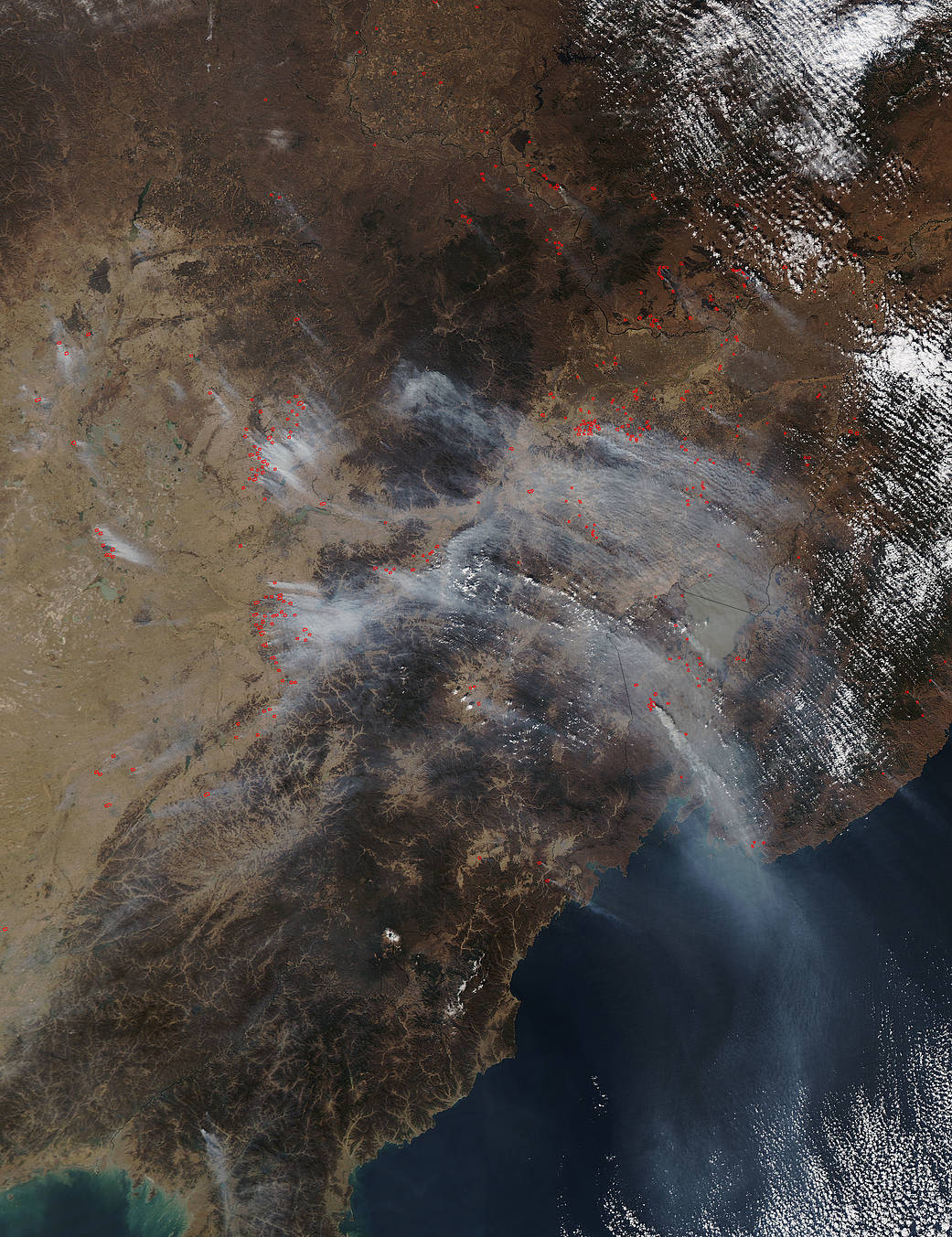The Atmospheric Chemistry and Physics Journal of the European Geosciences Union published a paper in February 2017 discussing the biomass burning that occurs every year in China. According to the paper: “Domestic straw burning, in-field straw burning, and firewood burning are identified as the dominant biomass burning sources.” In addition, the paper states: “Domestic straw burning is the largest source of biomass burning…corn, rice, and wheat represent the major crop straws. ” The study also notes that: “Heilongjiang, Shandong, and Henan provinces located in the north-eastern and central-southern regions of China have higher emissions compared to other provinces in China.” The paper discusses the amount of pollution that is produced from these fires in greater detail and can be viewed at the link stated above.
From the Science of the Total Environment published in February 2017 comes this paper – “A review of biomass burning: Emissions and impacts on air quality, health and climate in China” which says: “Traditionally, Chinese families used to collect and store the biomass of crop residues, weeds, branches and leaves as irreplaceable fuel for cooking or heating, and there are still some rural areas where this practice continues. Usually, this does not produce distinct air pollution events as the biomass burning emissions are similar through the year. Recently, due to rapid economic growth and urbanization in China, crop residues have been often field burnt post harvests in a couple of days to prepare for planting the next season’s crops. Rice, wheat and corn straws are the top three crop residues in China, which make up 75% of total straw productions. Usually, there are three concentrated periods of biomass burning: i) rice/wheat straw field burning from South to North of China, which is called summer harvest season (some reports call this spring harvest) in the late of May to the end of June; ii) crop residue burning in October, mainly corn residue burning in North China, and second season rice straw burning in South China; iii) heating in winter in North China.” From this report it seems as though most of the burning in this image is from the corn residue in North China.
NASA’s Aqua satellite collected this natural-color image with the Moderate Resolution Imaging Spectroradiometer, MODIS, instrument on October 30, 2017. Actively burning areas (hot spots), detected by MODIS’s thermal bands, are outlined in red. Each hot spot is an area where the thermal detectors on the MODIS instrument recognized temperatures higher than background. When accompanied by plumes of smoke, as in this image, such hot spots are diagnostic for fire.NASA image courtesy Jeff Schmaltz LANCE/EOSDIS MODIS Rapid Response Team, GSFC. Caption by Lynn Jenner with information from the papers cited above.



























